3D printing with PLA vs. PETG: What's the difference?
Learn the benefits of PLA and PETG, when you should use one instead of the other, post-processing techniques that work for both materials, and more.
Read articleYou’ve come to the right place. Hubs is now Protolabs Network.
The same broad capabilities, exceptional quality and competitive pricing under a new brand.






EN
Learn the benefits of PLA and PLA+, when you should use one instead of the other, post-processing techniques that work for both materials, and more

PLA and PLA+ are two very similar – and very popular – materials for FDM 3D printing. However, there are several key differences between the materials that are good to know. This comparison will help you choose which material to use for your 3D-printed custom parts.
PLA (polylactic acid) is a thermoplastic that is commonly used in 3D printing. It is made from the fermented sugars of plant-derived materials such as corn starch or sugar cane, and is biodegradable, recyclable, and compostable.
The properties of PLA include the following.
High stiffness. PLA is stiff and brittle when compared to materials such as ABS or PETG. This means it is not always suited to parts that require high degrees of flexibility.
Good strength. PLA is a relatively strong material, featuring a flexural strength of 103 MPa.
Low melting point. A melting point of approximately 145 °C makes PLA well-suited for 3D printing.
Fine details. PLA material can be used to create parts that exhibit fine details, although a minimum feature size of 1.2 mm is recommended.
Low UV and temperature resistance. PLA will quickly deform under high temperatures and UV light.
Chemical resistance. PLA is fairly chemical-resistant and is not soluble in certain solvents (such as isopropyl alcohol). However, certain chemicals can cause it to release lactic acid, which can be harmful in large quantities.
PLA+ is an enhanced version of PLA that has been formulated to exhibit better mechanical properties. To create PLA+, manufacturers add additives to regular PLA during polymerization.
PLA and PLA+ are very similar. That said, their key differences lie in their mechanical properties and performance characteristics. These include the following.
Flexibility and brittleness. Standard PLA is known for its stiffness and brittleness (i.e. a low impact strength). It can be somewhat prone to breaking under stress. PLA+ is formulated to be less brittle and more flexible.
Strength. PLA+ is designed to have increased strength, providing improved durability and resistance to breaking.
Temperature resistance. PLA+ may exhibit slightly better resistance to high temperatures and UV light than PLA.
PLA+ outperforms PLA on most metrics. However, there are two notable disadvantages of the material that merit some consideration. Let’s take a look at them.
Cost. PLA+ tends to be more expensive than standard PLA due to the addition of modifiers and enhancements.
Print difficulty. PLA is known for its ease of use. However, PLA+ may require higher print nozzle and print bed temperatures – making it a bit more difficult to print with than PLA.
Sometimes, you may not need the improved characteristics of PLA+. In these situations, PLA can still serve you well. Here are a few situations and reasons as to why you might select PLA over PLA+.
Cost considerations. If budget constraints are a primary concern and the enhanced mechanical properties of PLA+ are not crucial, standard PLA may be the better choice.
Simplicity and printability. PLA adheres well to build surfaces, has minimal warping, and generally requires less fine-tuning of printing settings. This makes PLA a preferred choice for beginners or those who prioritize hassle-free printing.
Wide availability. Standard PLA is widely available and comes in a variety of colors and formulations. This availability can be advantageous for users who need a specific color or property readily accessible.
Non-functional prototypes. PLA may be a suitable and practical choice for prototypes that do not need to function. It is also a popular material for general-purpose 3D printing.
PLA+ is often favored in scenarios where increased strength, reduced brittleness, and improved flexibility are critical factors. Users should consider the intended application, print characteristics, and desired material properties when making the decision. These could include the following.
Functional prototypes. PLA+ is preferred for prototyping applications where increased strength and durability are essential, offering improved mechanical properties over standard PLA.
End-use parts. PLA+ is suitable for creating functional parts that require enhanced strength and reduced brittleness, making it useful in engineering and manufacturing applications.
Mechanical components. Applications requiring higher flexibility and impact resistance, such as gears and mechanical components, benefit from PLA+'s improved mechanical properties.
PLA and PLA+ are known for their smooth surface finish, but post-processing techniques can further enhance the appearance of printed parts. Here are a few of the surface finishes and post-processing methods for PLA and PLA+ that our customers commonly use.
Sanding. Sanding is a versatile technique that can be used to smooth out layer lines and imperfections on both PLA and PLA+ surfaces. Starting with coarse grits and progressing to finer grits can achieve a polished finish.
Priming and painting. Both PLA and PLA+ are receptive to primers and paints. Applying a primer can create a smoother surface, and painting allows for customization with various colors and finishes.
Epoxy coating. Applying a thin layer of epoxy resin can provide a glossy and protective finish to both PLA and PLA+ prints, enhancing their appearance.
Polishing. Parts created with PLA and PLA+ can also be polished using a buffer to create the smoothest possible surfaces.
Order 3D printed parts using PLA. Just upload a CAD file to receive instant pricing and lead times. To get your 3D printed project started, you can also read more about choosing the right materials for your application and our guide to plastics.

PLA is derived from renewable resources and technically biodegradable, although it may take a long time to biodegrade.
PLA+ has enhanced strength and flexibility compared to standard PLA.
Yes, PLA+ is commonly used for 3D printing, offering improved mechanical properties, although it may require higher printing temperatures.
PLA+ is usually more expensive due to added modifiers and enhancements.
Yes, both PLA and PLA+ can be sanded to achieve smoother surfaces.
Both materials can be primed and painted.
Both have low heat resistance, however PLA+ may show better resistance to high temperatures compared to standard PLA.
PLA+ is better suited for outdoor applications due to improved UV resistance.
A heated bed is not strictly necessary for PLA or PLA+, but PLA+ often requires higher printing temperatures – for which a heated bed can be beneficial.
PLA+ is preferred for functional parts due to its enhanced strength and durability. Standard PLA is suitable for less demanding applications.

Learn the benefits of PLA and PETG, when you should use one instead of the other, post-processing techniques that work for both materials, and more.
Read article
Learn the benefits of PLA and PLA+, when you should use one instead of the other, post-processing techniques that work for both materials, and more
Read article
Nylon, also known as polyamide (PA) is a synthetic polymer with high tensile strength, excellent resistance to wear and abrasion, and a low coefficient of friction. Here’s how it’s used in manufacturing and engineering applications.
Read article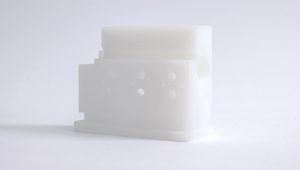
Want to learn more about chemically resistant parts? Find out about common chemical-resistant materials, their advantages, disadvantages, and industrial applications.
Read article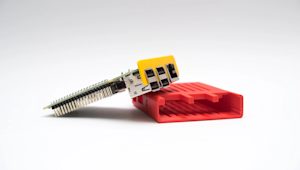
Polylactic acid, also known as PLA, is a thermoplastic material commonly used in additive manufacturing. It is one of the most commonly used materials in 3D printing, and can be used to create a wide range of parts, packaging, and prototypes for the medical, food, cosmetics, and textile industries, among others.
Read article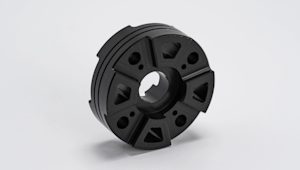
What is Delrin and why is it unique among the many manufacturing materials available? Delrin, or POM-H (homopolymer acetal), is used in CNC machining, 3D printing and injection molding to create durable, precise components. This article explores Delrin’s properties and how to get the most out of the material.
Read article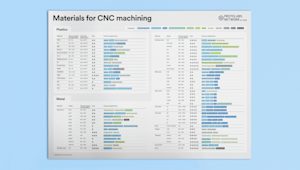
What’s the best material for machining your parts? Check out this side-by-side comparison of the strength, price and application for CNC plastics and metals (in a handy, printable poster).
Read article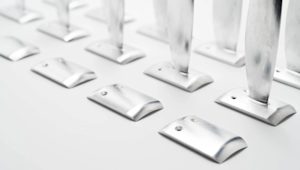
This comprehensive guide compares the 25 most common materials used in CNC machining and helps you choose the right one for your application.
Read article
What are the different materials available for SLA 3D printing? This article compares the main printing resins, including standard, tough, durable, heat resistant, rubber-like, dental and castable, by material properties. Find the best material option for your application.
Read article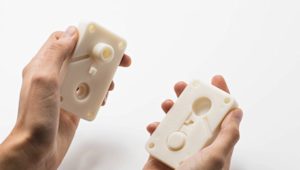
We compare critically two industrial 3D printing materials used for low-run injection mold manufacturing.
Read article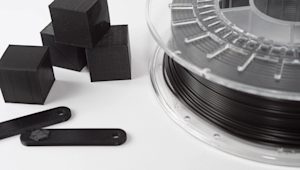
What’s the ideal material to use when 3D printing parts with FDM? This article compares the most common FDM 3D printing filaments, including PLA, ABS, PET, Nylon, TPU (Flexible) and PC, by their material properties to help you find the best option for your application.
Read article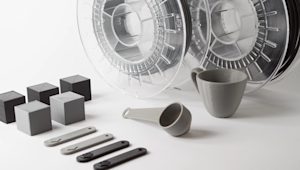
PLA and ABS are two essential materials for 3D printing with FDM. They are also two of the most popular materials on our platform. This comparison will help you choose which material to use for your 3D-printed custom parts.
Read article
Learn the benefits of PLA and PETG, when you should use one instead of the other, post-processing techniques that work for both materials, and more.
Read article
Learn the benefits of PLA and PLA+, when you should use one instead of the other, post-processing techniques that work for both materials, and more
Read article
Nylon, also known as polyamide (PA) is a synthetic polymer with high tensile strength, excellent resistance to wear and abrasion, and a low coefficient of friction. Here’s how it’s used in manufacturing and engineering applications.
Read article
Want to learn more about chemically resistant parts? Find out about common chemical-resistant materials, their advantages, disadvantages, and industrial applications.
Read article
Polylactic acid, also known as PLA, is a thermoplastic material commonly used in additive manufacturing. It is one of the most commonly used materials in 3D printing, and can be used to create a wide range of parts, packaging, and prototypes for the medical, food, cosmetics, and textile industries, among others.
Read article
What is Delrin and why is it unique among the many manufacturing materials available? Delrin, or POM-H (homopolymer acetal), is used in CNC machining, 3D printing and injection molding to create durable, precise components. This article explores Delrin’s properties and how to get the most out of the material.
Read article
What’s the best material for machining your parts? Check out this side-by-side comparison of the strength, price and application for CNC plastics and metals (in a handy, printable poster).
Read article
This comprehensive guide compares the 25 most common materials used in CNC machining and helps you choose the right one for your application.
Read article
What are the different materials available for SLA 3D printing? This article compares the main printing resins, including standard, tough, durable, heat resistant, rubber-like, dental and castable, by material properties. Find the best material option for your application.
Read article
We compare critically two industrial 3D printing materials used for low-run injection mold manufacturing.
Read article
What’s the ideal material to use when 3D printing parts with FDM? This article compares the most common FDM 3D printing filaments, including PLA, ABS, PET, Nylon, TPU (Flexible) and PC, by their material properties to help you find the best option for your application.
Read article
PLA and ABS are two essential materials for 3D printing with FDM. They are also two of the most popular materials on our platform. This comparison will help you choose which material to use for your 3D-printed custom parts.
Read articleShow more
Show less